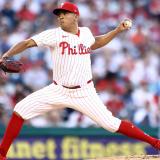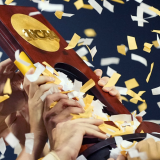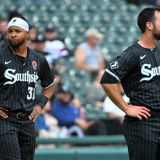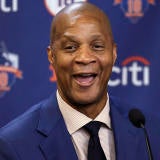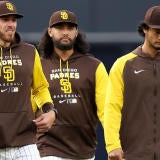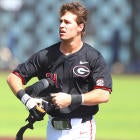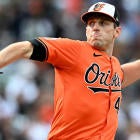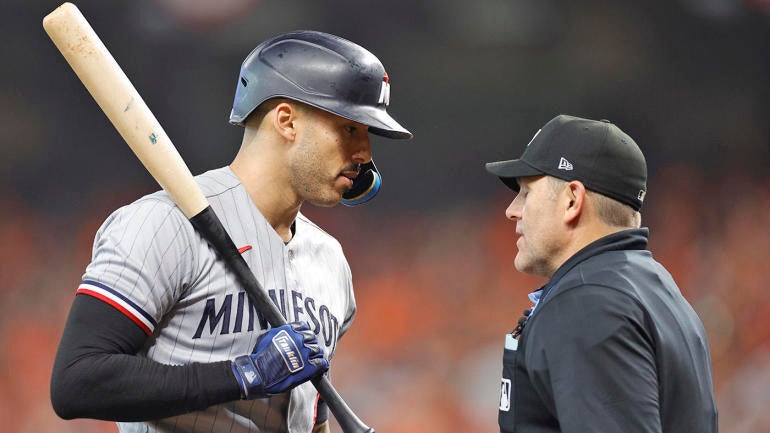
Ball-strike calls are one of baseball's most reliable sources of consternation for players, managers, and fans alike. Perceptions aside, big-league umpires generally do a very good job of making accurate calls. However, home-plater arbiters do not get every call correct, and as pitchers continue to gain velocity and sharp late movement on their offerings and catchers keep working on their framing skills in an effort to deceive the umpire, the job of determining whether a given pitch is in or out of the strike zone is more challenging than ever. Perhaps it's too challenging.
From the start of the 2023 season through the current date (i.e., when the league-wide average fastball velocity reached 94 mph for the first time on record), plate umpires have gotten 92.7% of ball-strike calls correct. By the sounds of it, that's a lofty enough figure, but the reality is that a large number of called balls and strikes are obvious decisions, very plainly in or out of the zone even to the untrained eye. Now consider:
- According to TruMedia data, plate umps on pitches classified as "on the corners" have had a called-ball-strike accuracy rate of 58.5% since the start of the 2023 season.
- When a pitch is on the corner and there are two strikes on the hitter, that accuracy rate falls to 45.9%.
To restate that last one for fitting emphasis, a pitch on the margins that the batter takes with two strikes is probably going to be called incorrectly by the umpire. And what about when we throw leverage into the mix? In high-leverage situations or clutch situations, umpires get calls on the corners with two strikes correct just 43.2% of the time. It's easy to understand, given the stakes of those moments, why such missed calls are lodged in the head of the hitter or pitcher and affect their perceptions of umpire competence. To be fair, these percentages are not adjusted, and "on the corners" constitutes a narrow sliver of the zone. In full context, getting close to half the calls correct is really something of an achievement, given how pitches move these days. Still, there's a bottom line correct-incorrect nature to it, and that must be acknowledged.
In a nod to all these realities, the automated ball-strike (ABS) system is presently in use at the Triple-A and High-A levels of the minor leagues, and the expectation is that some form of ABS system will eventually make its way to the highest level, perhaps via a challenge-based apparatus. That, however, is not a certainty given the vested interests in MLB and how different their viewpoints might be about the prudence and viability of an ABS system. So what happens in the meantime?
Very probably nothing happens in the meantime, meaning that the human eye will continue to be responsible for such crucial judgments. On Friday, however, Minnesota Twins shortstop Carlos Correa, frustrated by ball-strike decisions during his team's loss to the Guardians, gave voice to an idea to provide a bridge to the (possible) eventual arrival of the ABS system in the majors. Via Tom Withers of the Associated Press, Correa said:
"I feel like pitchers are too nasty right now for umpires to see. I feel like if the umpires knew what was coming and they had a Pitchcom (communication device) they would make calls so much better.
"It's really hard for them to just be able to call pitches, especially the way the catchers are framing nowadays. If they had a device where it says slider and they are anticipating the slider and they know where it has to start and land for it to be a strike, then we would get so many calls.
"But the fact that they are over there blind, it's really hard. I just think their job is too hard for me to be harsh on them. Sometimes I get calls, sometimes I don't and you move on."
Pitchcom is the audio device through which catchers and pitchers relay pitch calls during a plate appearance. The purpose is to eliminate the need for old-school hand signals by the catcher and thus reduce the possibility of sign-stealing by the opposition. As Correa suggests, home-plate umpires could listen in and theoretically prime themselves for what's coming from a mental and perhaps visual standpoint. For what it's worth, Correa is not the first to float such an idea. The genesis of the "umpires get Pitchcom earpieces" idea appears to be a 2023 episode of the Effectively Wild podcast on FanGraphs.
Would this help matters measurably, as Correa believes? Or would it make no real difference in the umpires' capacity to call contemporary pitches correctly? Or would knowing the pitch type ahead of time in some ways bias the umpire in one direction or the other? As with any new idea or innovation, the risk of unintended consequences is real.
Perhaps the idea merits serious consideration from the relevant league powers and the umpires themselves. Of course, it's the latter who would have the best idea as to whether Pitchcom access could improve matters. To repeat, though, the status quo will likely hold until the league makes the jump to an ABS system. That means more frustrations and, to hear the numbers tell it, more blown calls in crucial moments.







